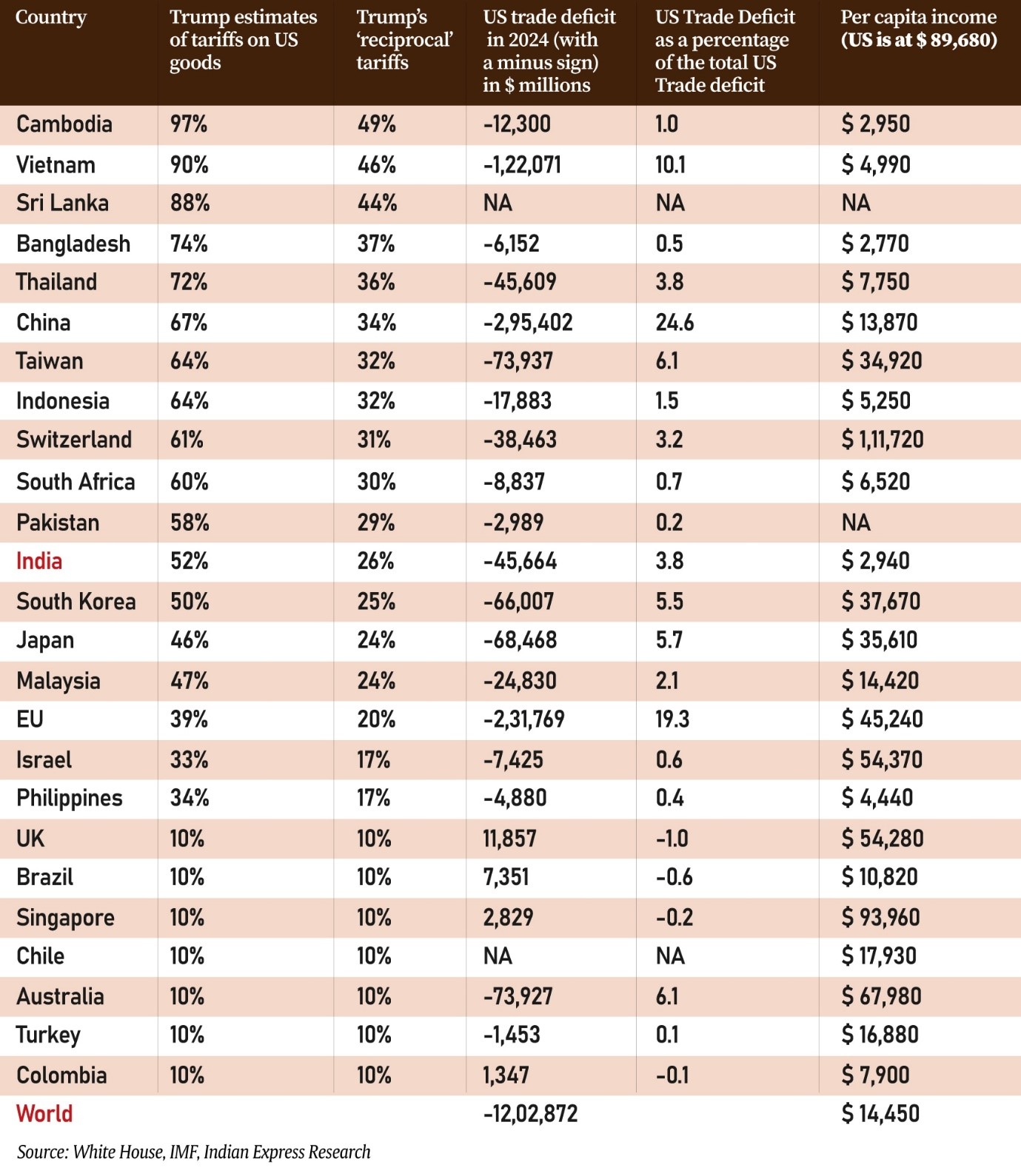7667766266
enquiry@shankarias.in
Mains (GS II) – Effect of policies and politics of developed and developing countries on India’s interests
Recently, US President Donald Trump celebrated America’s Liberation Day on April 2 by announcing reciprocal tariffs against all major trading partners.

Trade deficit is the gap between the value of a countries imports and exports.
|
Positive Impacts |
|
|
Negative Impacts |
|
Stagflation — stagnant growth with persistent high prices (inflation).